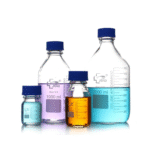STAND & CLAMP
A stand and clamp is a basic yet essential piece of laboratory equipment used to hold and support apparatus during experiments. It provides stability and helps secure glassware or other tools in place.
- Size Guide
Size Guide
DRESSEST-SHIRTBOTTOMSDRESSESSize Chest Waist Hips XS 34 28 34 S 36 30 36 M 38 32 38 L 40 34 40 XL 42 36 42 2XL 44 38 44 All measurements are in INCHES
and may vary a half inch in either direction.
T-SHIRTSize Chest Waist Hips 2XS 32 26 32 XS 34 28 34 S 36 30 36 M 38 32 38 L 40 34 40 XL 42 36 42 All measurements are in INCHES
and may vary a half inch in either direction.
BOTTOMSSize Chest Waist Hips XS 34 28 34 S 36 30 36 M 38 32 38 L 40 34 40 XL 42 36 42 2XL 44 38 44 All measurements are in INCHES
and may vary a half inch in either direction.
- Delivery & Return
Delivery
Store delivery FREE
1-3 working days
Home or collection point from £35.00 FREE
On all your orders for home or collection point delivery
Returns
Return
We will accept exchanges and returns of unworn and unwashed garments within 30 days of the date of purchase (14 days during the sales period).
Returns in store FREE
Your return will usually be processed within a week to a week and a half. We’ll send you a Return Notification email to notify you once the return has been completed. Please allow 1-3 business days for refunds to be received to the original form of payment once the return has been processed.
- Ask a Question
| 5 |
|
0 |
| 4 |
|
0 |
| 3 |
|
0 |
| 2 |
|
0 |
| 1 |
|
0 |
Related Products
Cell culture plate is a flat, sterile plastic or glass plate used in laboratories to grow and study cells under controlled conditions. It contains multiple wells (like 6, 12, 24, 96, or 384) where cells are cultured in nutrient media. These plates are essential in biological research, drug testing, and tissue engineering for observing cell behavior and responses.
Racks are laboratory tools used to hold, organize, and store test tubes safely and upright. They are made of plastic, wood, or metal and come in various sizes to fit different tube diameters. These racks help prevent spillage, breakage, and contamination during experiments, making them essential for safe and efficient laboratory work.
Inoculating loops are simple laboratory tools used to transfer microorganisms from one medium to another, such as from a culture broth to an agar plate. Made of metal (usually nichrome or platinum) or plastic, they have a small loop at the end that holds a tiny amount of liquid or cells. They are essential in microbiology for aseptic techniques.
Beaker is a common laboratory container used for mixing, stirring, and heating chemicals. It is usually made of glass or plastic and has a cylindrical shape with a flat bottom and a small spout for easy pouring. Beakers come in various sizes and have volume markings, but they are not used for precise measurements.
Cuvettes are small transparent containers used in spectrophotometry to hold liquid samples for absorbance or transmittance measurements. Made of glass, plastic, or quartz, they allow light to pass through the sample. Quartz cuvettes are preferred for UV light analysis. They are essential for accurate optical readings and must be handled carefully to avoid contamination or scratches.
A vacuum pump with filtration is a system used primarily in laboratories to remove air and create a vacuum for filtration processes. It helps in speeding up filtration by reducing pressure, allowing liquid to pass quickly through a filter paper.
Centrifuge tube is a cylindrical, conical-bottomed container used in laboratories to hold samples during centrifugation. Made of plastic or glass, it is designed to withstand high-speed spinning that separates components based on density. Centrifuge tubes come in various sizes (e.g., 1.5 mL, 15 mL, 50 mL) and often have screw caps or snap lids to prevent leakage during use.
A hydrometer is an instrument used to measure the specific gravity (relative density) of liquids. It consists of a sealed glass tube with a weighted bottom, allowing it to float upright. The level to which it sinks indicates the liquid’s density. Hydrometers are commonly used in brewing, winemaking, and battery testing.
Pipette tips are disposable, narrow plastic attachments used with micropipettes to accurately transfer small volumes of liquid in laboratories. They ensure precision, prevent cross-contamination, and are available in various sizes (e.g., 10 µL, 200 µL, 1000 µL). Sterile pipette tips are used in sensitive experiments like molecular biology, cell culture, and PCR.
A vacuum distillation glass set is a laboratory apparatus used to distill liquids at reduced pressure, allowing substances with high boiling points to vaporize at lower temperatures. This prevents thermal decomposition and is ideal for heat-sensitive compounds.
A pycnometer is a laboratory device used to determine the density or specific gravity of liquids and fine solids. It is usually a small glass flask with a close-fitting stopper that has a capillary hole to allow air to escape. Pycnometers provide highly accurate measurements and are commonly used in chemistry and material science.


















Reviews
There are no reviews yet.